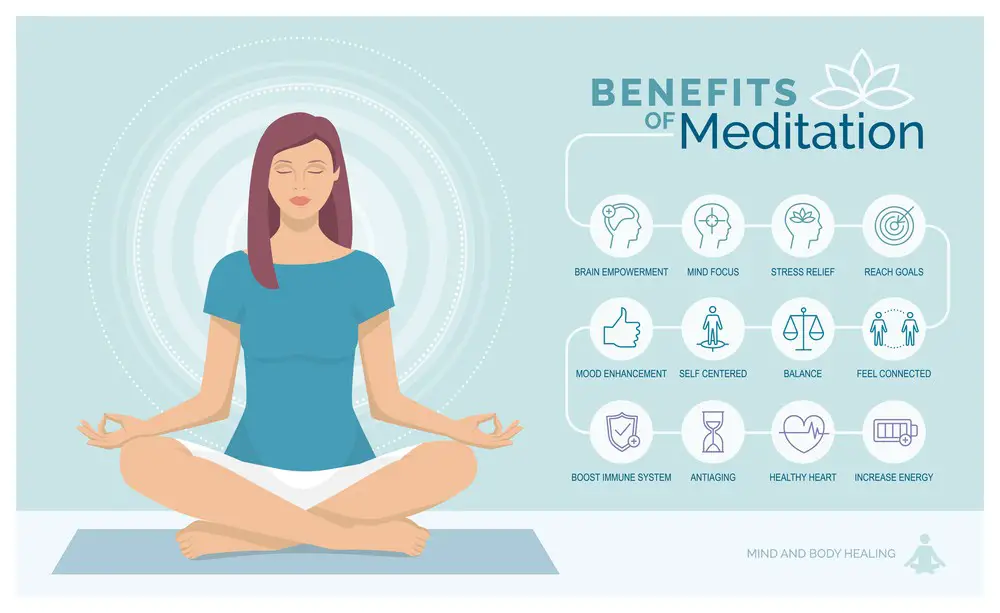If you are looking for a way to treat chronic pain, it is essential to take a well-rounded approach. Even though there might be some situations where prescription medications are helpful, they can also be addictive. That is why you need to find other ways to target chronic pain. Examples include meditation, exercise, and eating a healthy diet. Just like other activities, it can take a bit of practice with meditation if you want to maximize your benefits.
How can meditation help you treat chronic pain, and how can you use meditation to target specific types of chronic pain? Read on for answers.
How Does Meditation Help With Chronic Pain?
When you meditate, your goal is to focus all your attention and awareness on the present moment. Even though meditation cannot take the pain away, it can help you calm down each organ system. That way, you can observe all sensations throughout your body, including pain. Ultimately, as you focus all of your attention on your body, you should feel your mind begin to calm down. Then, you may be able to accept everything your body is going through, which can help you increase your pain tolerance levels. You can relax your mind, release specific hormones, and blunt the impact of chronic pain. Therefore, if you get better at meditation, you may find that you can control your pain level more quickly.
Consider Your Position
If you want to use meditation to target specific types of pain, you need to think carefully about your position. Some people like to meditate while sitting. Other people like to meditate while laying down. There are even people who like to meditate while kneeling. You need to think about where you feel your chronic pain. Then, you need to find a position to help you target that specific area. If you want that area to relax, you need to choose a position where you are not putting too much stress on that specific part of your body. Think carefully about your position as you meditate. You may also want a pillow or blanket handy for extra comfort.
Consider Your Breathing Pattern
You also need to think carefully about your breathing pattern when you meditate. It is very important. When you breathe, you want to feel like you are exhaling all of your pain, discomfort, and stress away. You should feel the breath travel through different parts of your body. If you know you have pain in a specific location of your body, you may want to envision yourself taking all of the pain signals from that part of your body and exhaling them away when you breathe. Think carefully about your breathing pattern, and try to have total control over your breathing pattern when you meditate. It can significantly impact your ability to have a successful meditation session.
Work Your Way Up To Longer Sessions
To maximize meditation’s benefits, you should work up to longer sessions. Like any other activity, it will take some time for you to get good at it. When you meditate for the first time, you might only be able to meditate for a minute or two before you lose track of your thoughts. Then, as you get better at meditation, you may be able to increase your meditation sessions to five minutes. You may also find that you can meditate more times per week.
Eventually, you will want to meditate for 15 or 20 minutes. It can take some time for you to calm down your mind, and it will take a while for your mind to release the necessary hormones to help you relax. Relaxation is the ultimate goal, and it can help you reduce the impact of chronic pain on your body. If you can work your way up to longer sessions, you should be able to target chronic pain in just about any location. Then, you may find that you can manage your pain more quickly.
The Benefits of Meditation Are Significant
Meditation has a wide variety of benefits that it can provide. If you want to maximize the benefits of meditation, it is something that you need to do regularly. Like other activities, the more you do, the better you will get at it. Remember that this is not necessarily something you must go through alone. If you want to learn about different types of meditation and how meditation can help you treat chronic pain, you might consider reaching out to an expert who can help you.
- The Burnout Epidemic: Why We’re All Feeling Overwhelmed and How to Cope - February 9, 2024
- How to Live a Peaceful Life - February 9, 2024
- Useful Information You Should Know About Health Screenings - February 8, 2024
This site contains affiliate links to products. We will receive a commission for purchases made through these links.



